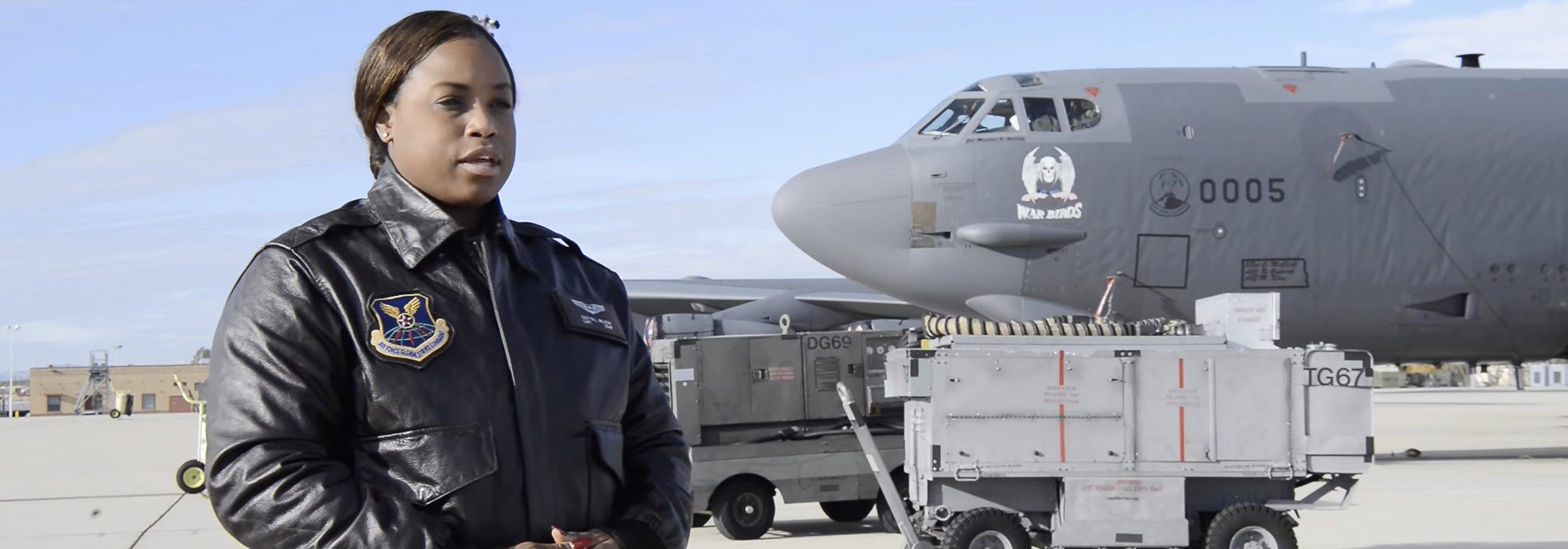P
reparing for conflict in the Pacific will require more than learning to fly fighters out of austere locations—it will also call for small bomber crews to go on quick consecutive missions to unfamiliar places.
In a kinetic “bomber agile combat employment” (BACE) exercise Dec. 6-8, two B-52s from the 5th Bomb Wing at Minot Air Force Base, N.D., conducted a mission in Canada then flew to Edwards Air Force Base, Calif., for a second mission, this time working alongside Navy counterparts.
“This was laying the foundation and the bed for getting to that austere and unfamiliar location,” Air Force Capt. Austyn Wilson, a weapons system officer in the wing’s 23rd Bomb Squadron, said in an interview. Wilson flew on one of the B-52s from Minot to Edwards and back for the two missions in three days.
Pacific Air Forces has spent decades adapting to operations in contested environments, first under the dynamic force employment concept and now under the Air Force’s new priority, agile combat employment (ACE).
Wilson said bomber ACE is about flexing new muscles and adapting to situations that were not part of prior operations and planning.
“You’re challenging assumptions, previous predictability, and you’re allowing the Air Force, and really our joint defense operations, to have adaptability that we haven’t seen in previous years,” she said.
Wilson said some of the questions the mission sought to answer were tactical: How are we going to conduct these missions? How are we demonstrating that flexibility? How are we sending a set of bombers to an austere location, making sure that they are self-sustained and able to execute combat out of an unknown location?
Answering those questions was exciting to the small maintenance team and aircrew of less than 20 who took part, she said, motivating them even as they prepared to board the aircraft Dec. 6 with temperatures hovering at negative 10 degrees with a negative-20-degree wind chill factor.
The bombers first flew to the range at Canadian Forces Base Shilo, Manitoba, working with Canadian Joint Tactical Ground Stations to drop 54 weapons. The aircrews then set course for Edwards for mission planning and an aircraft turnaround of less than 48 hours.
“One of the things that upgraded this mission … is our ability to operate jointly with the Navy,” Wilson said.
“Not only did we take off with our own weapons, and employ them en route to Edwards, but we were able to get the Mark 62 Quickstrike mines,” which are delivered into the water by air, “that we would also potentially be tasked with to support the Navy,” she added. “We were able to get those … built for us at Edwards, loaded, and employed the very next day.
Speaking Air Force bomber language to Navy personnel was something she had to be ready for.
“Two different branches, two different languages, and two different ways of operating, processes, regulations,” she said. “Making sure that you’re speaking very clearly with what your intent is, and the meaning, [and] the requirements.”
After landing at Edwards, a minimal support crew, some that flew ahead and some with the bombers, prepared the aircraft for its next mission at the Navy’s San Clemente Island Range Complex, a range off the California coast rarely used by B-52 pilots.
“We flew low level, at 3,000 feet over the water,” Wilson said, noting that the B-52 is one of the few platforms that can deliver mines. “We are getting our aviators ready to do so, if we’re called upon.”
Wilson also pointed out how bomber ACE was meant to challenge the assumptions of adversaries.
“I think our adversaries have seen us, especially B-52s, go to known locations over time, at predictable cycles,” she said.
“With bomber ACE, we are challenging that predictability. We’re making sure that our fleet is flexible, and that increases and strengthens our survivability,” she explained. “So now, when you send bombers to demonstrate these mission sets en route, and land somewhere else, you’re distributing the fleet. You’re decentralizing that control, and now you’re completely complicating the targeting solution for any of our adversaries.”
For Wilson, the sense of accomplishment and the excitement of the mission came from the series of milestones that had to be met by a small, willing 5th Bomb Wing team working with the Navy.
Bomber ACE milestones included getting into the aircraft within 20 minutes, getting off the ground in the next hour, dropping the bombs, and loading the mines. Each milestone was an accomplishment within a more complex mission set.
“Once we land at Edwards, you know, you want to take a sigh of relief of, ‘We did it,’ but that was only half the job. You have to do an entirely different mission set within 24 hours and get back home and get back home safely, with two B-52s that really are STRATCOM assets,” she said.
“The most exciting portion for me is [saying], ‘Hey, I want to challenge this tactic, this assumption. I want to go to the next level. Can you go here with me?’ And every single person that was involved in the planning and execution absolutely did that,” she said.
